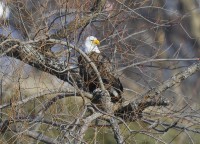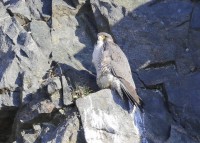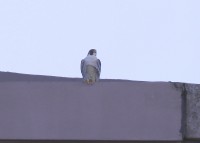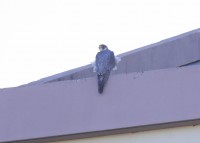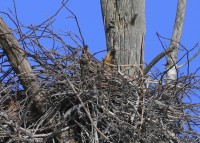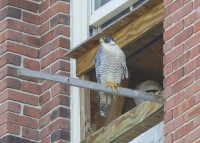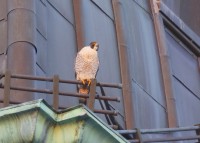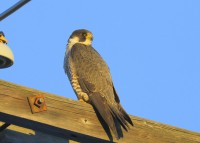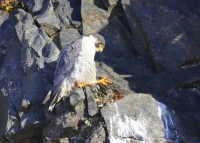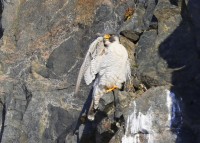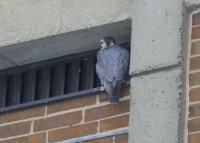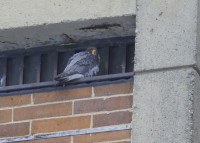Lawrence Peregrines: pair bonding
February 28, 2017 in On the Clock Tower
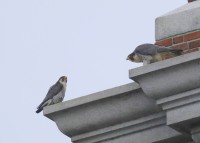 Both Lawrence Peregrines were observed just before dark on a cloudy afternoon. They were both perched on a lower granite ledge beneath the clock face on the NW corner of the Clock Tower. The smaller peregrine on the left is the male and the larger peregrine on the right with thicker barring is the female.
Both Lawrence Peregrines were observed just before dark on a cloudy afternoon. They were both perched on a lower granite ledge beneath the clock face on the NW corner of the Clock Tower. The smaller peregrine on the left is the male and the larger peregrine on the right with thicker barring is the female.
As a bit of background, peregrine falcons form monogamous pair bonds that often last throughout many breeding seasons. Both males and females have a strong attachment to previous nesting sites, which may explain monogamy over multiple breeding seasons, rather than attachment between individuals.
Males display at nest ledges and other nearby locations to attract females and advertise ownership to other falcons. The development, and renewal of a pair bond is indicated by the male and female roosting near each other. Eventually they sit at the nest ledge side by side. Individuals may also peep at each other, preen, nibble their mate’s toes, or “bill” (gently grab the other bird’s bill in their own). Both sexes may then engage in “ledge displays”, centered on, or near, the area of their nest, or scrape. Prior to egg-laying, the pair will engage in incredible aerial displays, involving power dives, tight cornering, high soaring, and body rolls during a dive. Once the pair has formed, or been renewed, they begin to hunt cooperatively and females begin to beg for food from the male!
